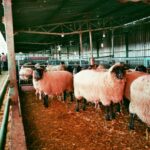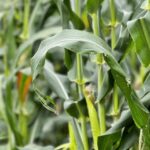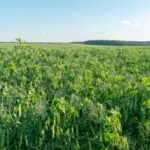Shrimp farming is a lucrative venture for South African farmers, given the growing demand for high-quality seafood in both local and international markets. However, success in shrimp farming requires careful planning and proper management. Many farmers face challenges that can lead to significant losses. Below are 10 common mistakes in shrimp farming and practical solutions to help you avoid them.
1. Choosing the Wrong Location
The success of shrimp farming begins with selecting the right site. Poorly chosen locations with inadequate water quality, salinity, or accessibility can lead to low yields.
Solution: Select areas with consistent water quality, proper drainage, and easy access to transportation. Coastal regions or areas near estuaries are ideal for shrimp farming. Conduct site surveys to test water salinity, pH levels, and soil suitability.
2. Stocking Poor-Quality Shrimp Post-Larvae (PL)
Using poor-quality shrimp post-larvae often leads to high mortality rates and slow growth. Some farmers overlook the importance of sourcing PL from certified hatcheries.
Solution: Purchase post-larvae from reputable hatcheries that test for diseases and ensure genetic diversity. Perform a stress test on the PL by observing their survival in water with reduced salinity before stocking.
3. Overstocking the Ponds
Overcrowding shrimp ponds increases competition for food and space, leading to stunted growth and higher susceptibility to disease outbreaks.
Solution: Follow recommended stocking densities based on pond size and water management capacity. A general rule is to stock 20–25 PL per square meter for semi-intensive farming.
4. Poor Water Quality Management
Neglecting water quality is one of the most common reasons for shrimp farming failures. Poor water conditions can stress the shrimp, making them vulnerable to diseases.
Solution: Regularly monitor and maintain optimal water parameters such as pH (7.5–8.5), salinity (15–25 ppt), dissolved oxygen (above 5 ppm), and ammonia levels (below 0.1 ppm). Use aerators to improve oxygen levels and reduce organic matter buildup.
5. Inadequate Pond Preparation
Skipping proper pond preparation before stocking often leads to poor shrimp health and low yields. Issues such as residual toxins, harmful bacteria, and uneven pond floors can cause problems.
Solution: Drain and dry the pond completely before starting a new cycle. Remove excess organic matter, apply lime to neutralize acidity, and fertilize the pond to encourage the growth of natural food sources.
6. Overfeeding or Underfeeding
Improper feeding practices result in wasted feed, poor shrimp growth, and degraded water quality. Overfeeding leads to excess organic matter, while underfeeding stunts shrimp growth.
Solution: Use high-quality feed and follow a strict feeding schedule. Monitor shrimp feeding behavior and adjust feed amounts accordingly. Employ feed trays to avoid overfeeding.
7. Ignoring Biosecurity Measures
Neglecting biosecurity can result in disease outbreaks, which are often devastating to shrimp farming operations. Many farmers fail to implement strict biosecurity protocols.
Solution: Limit access to ponds to essential personnel, disinfect equipment regularly, and use crab fencing to prevent predators from contaminating the ponds. Quarantine new stock before introducing them to existing ponds.
8. Lack of Disease Monitoring
Shrimp are highly susceptible to diseases such as white spot syndrome, early mortality syndrome (EMS), and bacterial infections. Failure to monitor and detect diseases early can result in total losses.
Solution: Conduct routine health checks and watch for symptoms like lethargy, discoloration, or unusual swimming patterns. Consult aquaculture specialists for disease diagnosis and treatment.
9. Skipping Regular Maintenance
Many farmers overlook regular maintenance of ponds, equipment, and aerators, which can lead to operational inefficiencies and increased costs.
Solution: Develop a maintenance schedule that includes cleaning ponds, servicing aerators, and checking water inlets and outlets for blockages. Regularly calibrate water testing equipment to ensure accuracy.
10. Ignoring Market Trends
Some farmers fail to research market demand and pricing before harvesting, leading to lower profits. Timing and market knowledge are crucial for maximizing returns.
Solution: Monitor local and international shrimp market trends. Develop relationships with buyers, restaurants, and seafood exporters to secure contracts before harvesting. Consider value addition, such as freezing or packaging, to increase profitability.
Shrimp farming offers South African farmers a unique opportunity to diversify their income, but success requires avoiding common pitfalls. By implementing proper site selection, biosecurity measures, water quality management, and market research, farmers can enhance their productivity and profitability. Stay committed to learning and adapting best practices to make the most of your shrimp farming venture.
Join 'Farmers Mag' WhatsApp Channel
Get the latest Farming news and tips delivered straight to your WhatsApp
CLICK HERE TO JOIN






